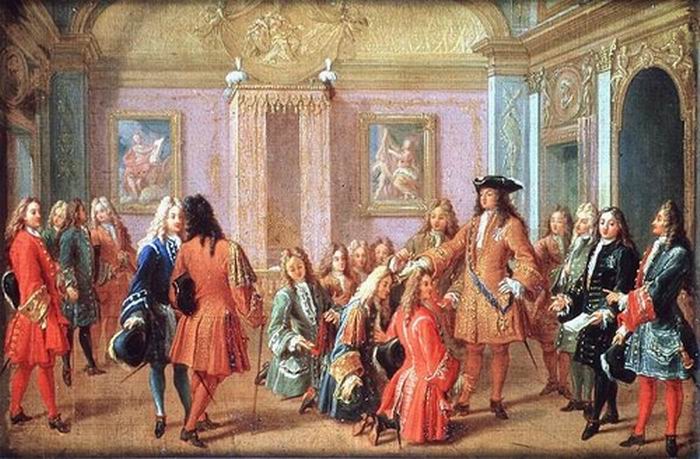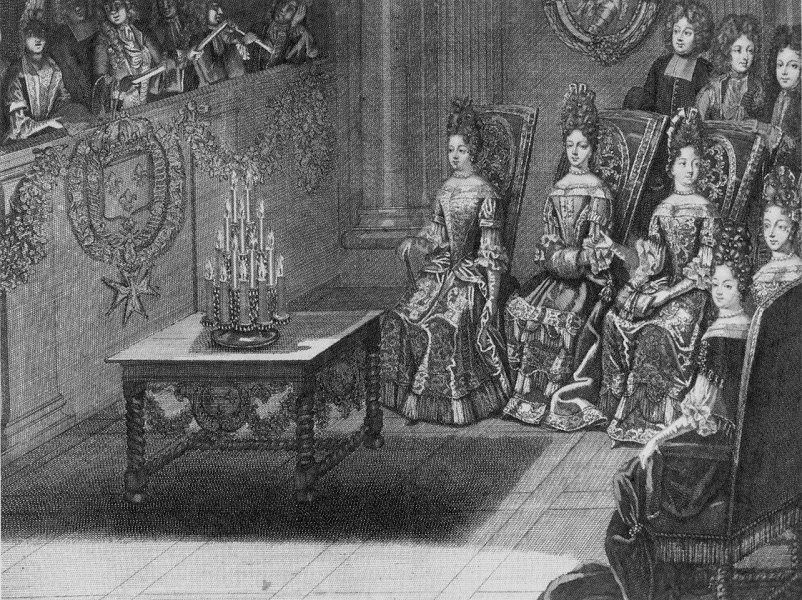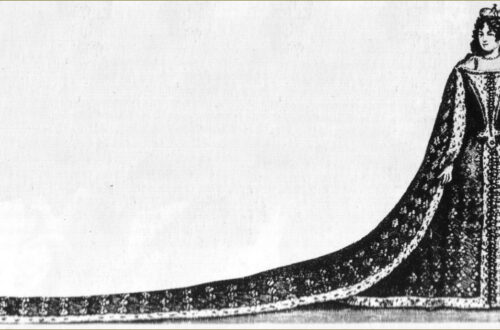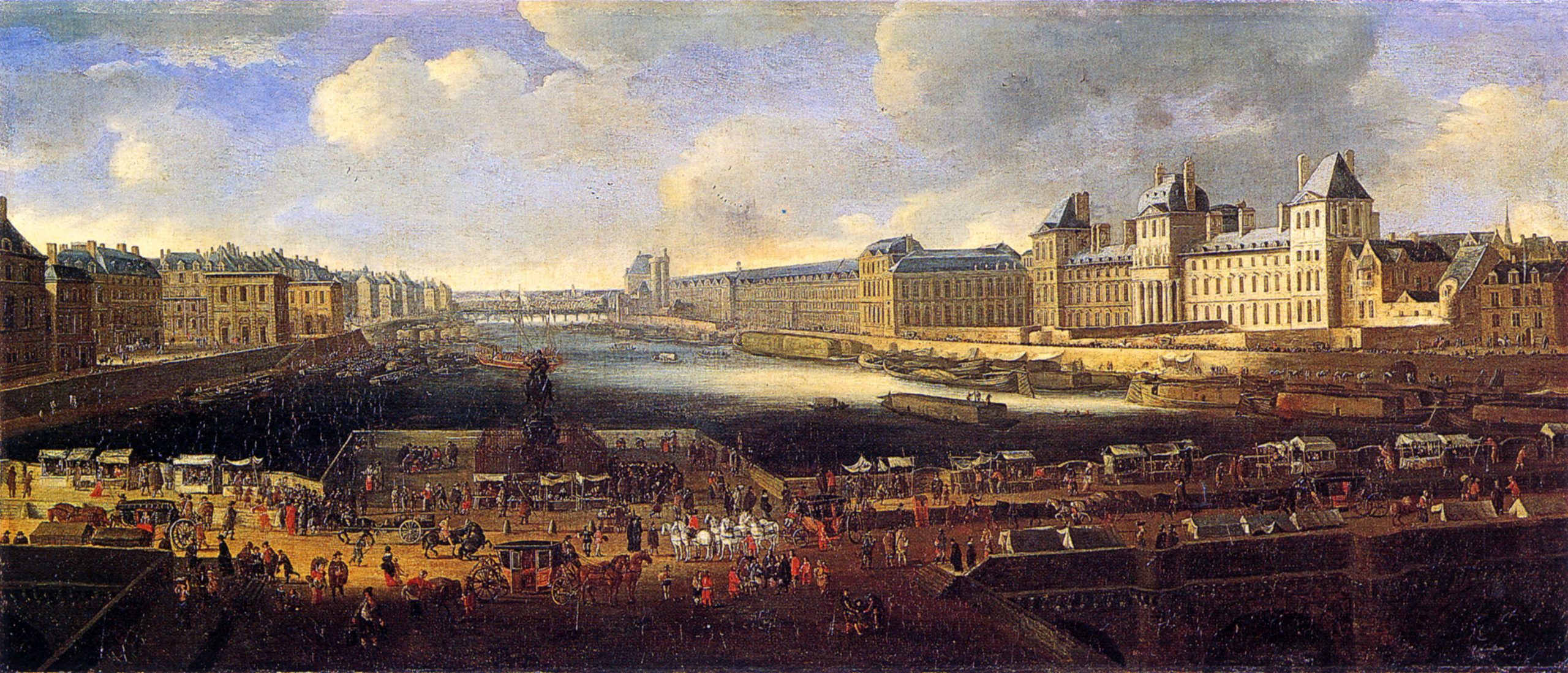The Art Of Addressing French Nobility
We all know the feeling… one is new at court and one suddenly stands in front of nobility, but has no idea how to address them. Is it “Highness”, or “Serene Highness”, “Royal Highness” even, or just a simple Madame or Monsieur? If the court happens to be that of Louis le Grand, the Sun King, addressing someone in the wrong way is pretty much one big faux pas, but it can be easily avoided…

Let us first look at the names in general. The name of a French noble consists of three things, the first name, the de, and in most cases the name of their house, which can also be the name of a place. For example, Catherine-Charlotte de Gramont. Their titles on the other hand are not always equal to their house name, they get the last part, the part after the de, from their properties. This can be a Principality, a Duchy, a Comté (French for county or earldom), a Marquisat, Seigneurie, Baronnie, and so on.
So far so good. Now let’s get to why it can be so very complicated to address someone correctly. There is always more than one way to address someone and those depend pretty much on the situation. In general, a simple Monsieur, Madame, and Mademoiselle is always right.
Yet you should avoid that when you are in company of the actual Monsieur, Madame, and Mademoiselle. These three are the actual traditional ways to refer to the King’s brother (Monsieur), his wife (Madame), and his oldest daughter (Mademoiselle). Thus if someone would refer to simply Madame, everyone else would presume the Duchesse d’Orléans is meant. In this very case, if the Madame is not the Duchesse d’Orléans, the last name of the Madame in question should be added. This is the second way of how one can address someone, by saying Madame de, Monsieur de, Mademoiselle de. This can be done by adding either the last/house name of the person, or the name of the property that is part of their official title.
For example, Guy-Armand de Gramont, in his case Monsieur de Gramont or Monsieur de Guiche. You can also refer to someone by saying Monsieur le Prince, Madame la Princesse, Monsieur le Duc, Madame la Duchesse, Monsieur le Comte, Madame la Comtesse, but be careful, those are traditional titles as well and assigned to certain people. If you say you visited Madame la Duchesse, everyone would think you mean wife of Monsieur le Duc, the eldest son of the Prince de Condé, and not, for example, Madame la Duchesse de Nevers, which you actually visited.
The third safe way and the one that is the ‘most proper’ is to add their title and to address them in full style, for example Monsieur le Marquis d’Effiat,… but what if there is more than one person with that title? This can actually happen. The best examples in this case are the Princesses of the Blood, especially the wives of the Princes de Conti. There was a time when there were three of them. Upon the dead of a Prince de Conti, his heir is given the title, and the wife of the deceased Prince will remain Princesse with a “Douairière” added, thus making her Madame la Princesse de Conti Douairière. Between 1727 and 1732, there were three widowed Princesses de Conti that needed to be distinguished and it was achieved by adding numbers to them in the order they were widowed, creating Madame la Princesse de Conti Première Douairière, Madame la Princesse de Conti Seconde Douairière, and Madame la Princesse de Conti Troisième.
If you happen to know whether the person you are addressing is some sort of Highness (including Royal and Serene), you can add this as well. This would be the formal way of addressing, the one that is used when someone is introduced, announced or you write a letter. For example, Her Serene Highness Madame la Princesse de Monaco or His Serene Highness Monsieur le Prince de Condé.
Why do things the easy way when one can do it complicated, you might think. And it gets even more complicated…
Since the title a person carries doesn’t always equal their rank, see the Foreign Princes, it is important to know exactly who you are talking to or of. Someone with the title of Chevalier, that by itself ranks really low, can actually be a Prince, who has adopted the more humble title of Chevalier for himself.

Here are the more complicated ones:
- The King – Louis XIV’s formal style is ‘Louis XIV, par la grâce de Dieu, Roi de France et de Navarre’. When addressing the King use Your/His Most Christian Majesty, Your/His Majesty, Sire, or Monsieur le Roi.
- The Queen – Marie-Thérèse is addressed as Your/Her Most Christian Majesty, Your/Her Majesty, Madame la Reine.
- The King’s brother – He is traditionally addressed as simply Monsieur. However, Monsieur le Duc d’Orléans, His Royal Highness Monsieur le Duc d’Orléans work as well. As does His Royal Highness Monsieur, frère unique du Roi. In full the King’s brother went by ‘Monsieur, frère unique du roi, Fils de France, Duc d’Anjou puis Duc d’Orléans, de Chartres, de Valois, de Nemours et de Montpensier, de Châtellerault, de Saint-Fargeau et de Beaupréau, Pair de France, Prince de Joinville, Comte de Dourdan et de Romorantin, Comte de Mortain, Comte de Bar-sur-Seine, Vicomte d’Auge et de Domfront, Marquis de Coucy et de Folembray, Marquis de Mézières, Baron de Beaujolais, Seigneur de Montargis, Chevalier de l’Ordre du Saint-Esprit’ (That is a whole lot of titles and he did not have all of them all the time, some of them were given to others, like Duc d’Anjou or Duc de Chartres, not because he did not fancy anymore, but because some of them traditionally were given at birth to sons.)
- His wife – Since the King’s brother was Monsieur, his wife went by Madame. Her Royal Highness Madame la Duchesse d’Orléans, Madame la Duchesse d’Orléans, Her Royal Highness are proper as well. The first-born daughter of Madame and Monsieur was referred to as Mademoiselle, Her Royal Highness Mademoiselle, Her Royal Highness or Mademoiselle d’Orléans. In all cases, the traditional titles are the preferred ones.
- The Dauphin/e – Monseigneur was the chosen style of the Dauphin. His/Your Royal Highness, Monseigneur le Dauphin, His/Your Royal Highness Monseigneur le Dauphin are proper too. The Dauphine, if there is one, goes by Madame la Dauphine, Her Royal Highness, Her Royal Highness Madame la Dauphine. To distinguish between the current Dauphin and his eldest son, the prefixes of Grand, for the father, and Petit, for the son, were added. After the dead of le Grand Dauphin, the style of Monseigneur was not used again to describe the Dauphin himself, but was used by his by his sons as prefix to their peerages, for example Monseigneur le Duc de Bourgogne.
- The Fils de France and Filles de France – The sons and daughters of the King, with the Dauphin being the most senior of them, are addressed the following, daughters were referred to by their given name prefaced with the honorific Madame, while sons were referred to by their main peerage title (usually Ducal), with the exception of the Dauphin. The King’s eldest daughter was known as Madame Royale until she married, whereupon the next eldest Fille de France succeeded to that style.
- The Petit-Fils and Petite Filles de France – This is a rank created by Louis XIII on behest of his brother Gaston, and includes the grandchildren of a King in the male line. These are usually addressed by using their full style titles, or très haut, très puissant et excellent prince or Royal Highness.
- Prince du Sang et Princesse du Sang – The rank of Prince du Sang or Princesse du Sang was restricted to legitimate agnates of the Capetian dynasty who were not members of the immediate family of the King. Those who held this rank were usually styled by their main ducal peerage, but sometimes other titles were used, indicating a more precise status than Prince du Sang. For example, Monsieur le Prince was the style of the First Prince of the Blood, Premier Prince, which normally belonged to the most senior male member of the royal dynasty, who is neither a Fils de France nor a Petit-Fils de France. His wife was thus known as Madame la Princesse. In practice, it was not always clear who was entitled to the rank, and it often took a specific act of the King to make the determination. Monsieur le Duc was the style was used for the eldest son of the Prince de Condé, the Premier Prince, and his wife is referred to as Madame la Duchesse. Monsieur le Comte was used to address the head of the most junior branch of the House of Bourbon, the Comte de Soissons. As the second Comte de Soissions died without an heir, the Soissons title passed to his younger sister and the House of Savoy. In the time of Louis XIV it was held by Eugène Maurice de Savoie. His wife was addressed as Madame la Comtesse. The style Serene Highness was used in writing only.
- Prince Légitimé et Princesse Légitimé – The legitimised children of the King of France, and of other males of his dynasty, took surnames according to the branch of the House of Capet to which their father belonged. After the legitimisation occurred, the child was given a title. Males were given titles from their father’s lands and estates and females were given the style of Mademoiselle de X until married and were usually addressed by their full style, for example Mademoiselle de Nantes.
- Prince étranger – The Foreign Princes were entitled to the style of haut et puissant Prince as well as Highness. Those are very tricky to address. They could have any kind of title, from Prince to Chevalier, which makes it a little difficult. For example, Louis de Lorraine, he was a Foreign Prince and a Comte. If he were only a Comte, the styles of Monsieur le Comte and so on could be used, but since he was also a Foreign Prince, it would be His Highness Louis de Lorraine, His Highness Monsieur de Lorraine, His Highness Monsieur le Comte d’Armagnac, His Highness, Monsieur de Lorraine, Monsieur le Comte d’Armagnac, Monsieur d’Armagnac. The same applies for the wives of Foreign Princes and their children.
Now things are getting a little simpler again. All other titles (Duc and Duchesse, Marquis and Marquise, Comte and Comtesse, Vicomte and Vicomtesse, Baron and Baronne, Chevalier) are addressed in the above mentioned three styles of Monsieur/Madame, Monsieur/Madame de NameOfHouseOrPoperty, Monsieur/Madame le/la InsertTitleHere. If the style of addressing you use equals a traditional title held by someone else, like Monsieur le Duc, make sure to define who you mean by using the other two styles or it can get confusing.
(I hope this is not written too complicated and you actually get the idea. It took me quite a while to get behind the system of addressing, but the more you do it, the easier it gets.)





4 Comments
FIONA BROPHY
THANK YOU FOR YOUR HELP. I AM HOSTING A GARDEN PARTY TO OPEN MY GARDEN,WHICH IS
A MUCH SMALL STYLE OF VERSAILLES. AND WANTED TO USE THE CORRECT WORDING.
Victoria
First, thank you very much for this; your information was incredibly helpful, and I was able to follow your writing with ease.
My question is, how would one style say a Duc’s second son or a Marquis’ daughter? Would it be Monsieur [firstname] and Mademoiselle [firstname], respectively? Or would family surnames/house names be more appropriate in both cases?
And, when would one use ‘demoiselle/damoiselle’, if at all?
Aurora
Hiya 🙂
A daughter of a noble is a Mademoiselle by default. The only exception here is the oldest daughter of the King, which is called Madame Royale by default.
Typically a daughter, if it is only this one daughter, would be styled Mademoiselle title of the father. For example, if the Marquis de Sourdis has only a single daughter, this daughter is Mademoiselle de Sourdis.
If the Marquis has more than one daughter, all following daughters will be called Mademoiselle de fief of the father by order of importance. For example, the Marquis de Sourdis is also a Baron de Asnières, then the second born daughter is styled Mademoiselle de Asnières. Now, if the first born marries, the second born would become Mademoiselle de Sourdis, because it is more prestigious.
It’s pretty much the same in case of sons, just that they usually receive a title at birth.
I’m taking Louis de Lorraine as example here, because he had plenty of sons. Louis de Lorraine was Comte d’Armagnac and his first born son was styled Comte de Brionne, as it was the second most prestigious title of the father prior to the birth of the son.
In turn, the second son would receive the third most prestigious title of the father, unless the parents mean for the second son to join the church, in which case the second son would be styled Chevalier de last name of the father. This was the case with Louis, his second son was meant for the church and styled Chevalier de Lorraine. (Not to be confused with the other Chevalier de Lorraine.)
If the second son is meant for the church, the third son thus would receive the third most prestigious title of the father. In case of Louis, his third son was styled Comte de Chamilly.
Demoiselle/damoiselle is not used to address someone directly. It’s always Mademoiselle.
Victoria
Thank you very much, Aurora! This cleared up all my questions. 😀